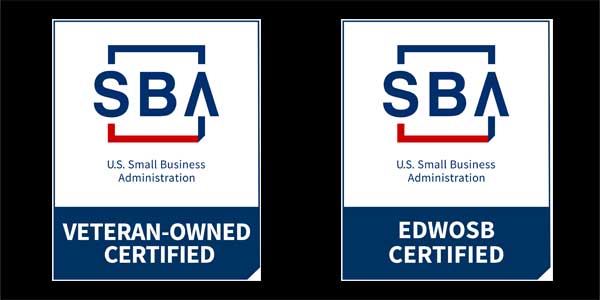Industry Use Cases
Use case studies are a valuable tool for understanding a company and its operations. By examining a specific example of how the company solved a particular problem or achieved a specific goal, a use case study can provide insights into the company's processes, decision-making, and overall approach to business.
Quick Links Menu
Construction
Jobsite Safety Training
Problem
A regional, heavy civil construction company was experiencing significant accident and injury rates due to a high turnover in trades and subcontract workers.
Impact
OSHA violations and an increase in several, unreported near misses were on the rise as well as other key indicators including:
- Lost Time
- Increased Costs
- Poor Morale
Additionally, polled workers indicated a reluctance to express safety concerns.
Solution
Leadership determined that the existing safety training did not support recent demographic changes and high turnover. Initially, a number of eLearning seats were purchased using My Virtual Safety Trainer (MVST) as the curriculum with an emphasis on slips, trips, and falls.
Results
The data was analyzed after an initial six-month period with the following indicators:
- Microlearning was a more efficient form of training
- Simulations and interactivity created much higher learner engagement
- Accident and injury rates leveled off and rate of decline could be projected
- Worker morale increased especially amongst new hires and workers of a younger demographic.
Overall a plan is being formulated to implement the training technology companywide
Energy & Renewables
Energy Association
Problem
An energy-related organization dedicated to serving its member companies became aware of increased workplace-related accidents. These accidents appeared systemic in nature and could be directly related to inadequate workplace safety training.
Impact
One of the key values of the management Association was to provide a resource-rich service offering to its member companies. Poor workplace training and the associated loss in productivity in the increase in costs based on liability and risk necessitated a new approach to safety training.
Solution
A comprehensive search focused on the need to step beyond the traditional methods of safety training and look toward new and emerging technologies. A short list of contenders was created with the ultimate selection going to a micro-learning platform (MVST) that not only offered eLearning but also incorporated VR simulations and interactive gamified content.
Results
Offering a standardized training platform to its member/client companies allowed “redacted” to stay relevant within their industry and also to be forward facing in the ongoing initiative of reducing accidents and injuries in the workplace. Some key features were highlighted by the participating member companies including:
- Hardware compatibility with little or no additional investment
- A significant increase in adult learner participation and engagement
- Requests for this type of training and other business units
- Some client companies reported a significant reduction in onboarding time and resources
The initial program has been expanded to include some custom training modifications and environments as requested by specific client companies.
Manufacturing
Crane Safety Training
Problem
Moving 25-ton coils of steel around a manufacturing environment have always included a certain degree of inherent risk, that said this organization experienced a significant increase in crane-related accidents and one fatality over a short period of time necessitating a comprehensive look at their safety training and culture.
Impact
A specific look at the crane safety part of the overall workplace safety training was found to be deficient not only at that particular manufacturing site but a crossed the company as a whole. These training deficiencies were found to create significant risk and liability and focused effort was initiated to find a solution.
Solution
A custom training solution was developed to specifically address the training deficiencies that had been identified within the curriculum. This training included VR simulations to better engage the trainees and also to build content retention.
Results
The training was wholly embraced by the workforce and there was a significant reduction in near-miss accidents and injuries. The VR simulations were highlighted in the analysis as being engaging and in fact, more of this type of training was requested by the majority of the workers polled.
Oil & Gas Production
Gas Pipeline Distribution
Problem
The current training curriculum was found unsatisfactory relating to gas metering and implementation techniques. This training deficiency could be directly attributed to several safety accidents in the field.
Impact
Workplace accidents no matter how significant or minor are always a concern to a safety-conscious organization. These accidents even though they were relatively minor did point out a widespread deficiency within the organization’s standardized training.
Solution
A combination of customized process training involving VR simulations was developed to directly address the training deficiency regarding the gas metering procedures. The training was developed for off-the-shelf hardware that could be implemented in both the training room and also the field.
Results
The customized training program was deemed a success based on analysis over a period of months and the training department further embraced the technology by implementing the MVST platform for general safety training within their organization.

